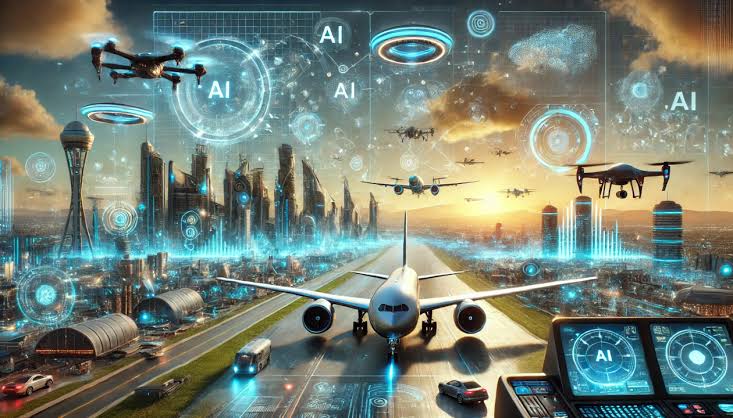How AI navigation is transforming aerial: groundbreaking innovations

Artificial Intelligence (AI) is reshaping industries worldwide, and aeronautics is no exception. With its unparalleled ability to analyze data, make real-time decisions, and optimize complex systems, AI is unlocking new possibilities for aerial navigation. From UAV operations in GPS-compromised zones to AI copilots enhancing flight safety, these innovations demonstrate how AI is setting new benchmarks for reliability, safety, and efficiency in the skies.
AI Navigating without GPS: inertial solutions for UAVs
Unmanned Aerial Vehicles (UAVs) rely heavily on GPS for navigation. However, GPS signals can be unreliable or completely unavailable during natural disasters or in high-security military operations. To address this challenge, companies like Bavovna.ai, an alumnus of the US Air Force Labs Mass Challenge acceleration program, are spearheading groundbreaking solutions.
Their AI-powered Positioning, Navigation, and Timing (PNT) system uses sensor fusion and pre-trained machine learning (ML) and deep learning (DL) algorithms to navigate autonomously. Designed with hardened core electronics, this system is resistant to electromagnetic interference, ensuring consistent functionality even in challenging environments.
In trials, the Aurelia X6 Max multicopter demonstrated autonomous flight capabilities without relying on GPS or remote control. The AI navigation system achieved a positioning error of just 0.5%, covering distances up to 30 miles (48 km) with impressive precision. Beyond navigation, this technology is being extended to critical applications such as signals intelligence, mine detection, and surveillance.
Smarter skies: AI navigation for commercial aviation
Modern aircraft are equipped with advanced autopilot systems, but pilots still face overwhelming workloads due to alerts, communication demands, and numerous system interfaces. This complexity increases the risk of human error, which can lead to dire consequences. Enter the AI copilots—game-changing assistants designed to reduce pilot workload and improve flight safety.
One notable example is Air-Guardian, a project developed by MIT CSAIL. This system enhances human-machine interaction (HMI) in cockpits by using eye-tracking technology to monitor pilot attention and “saliency maps” to interpret aircraft behavior.
Built on a continuous-depth neural network, Air-Guardian identifies risks early and can take control when necessary. During tests, the system significantly reduced flight risks, offering a promising glimpse into the future of safe, AI-enhanced aviation.
Clearing the air: AI for traffic flow management
Air traffic congestion, often exacerbated by unforeseen weather conditions, has a cascading impact on flight schedules and fuel consumption. AI is stepping in to provide a smarter approach to managing these challenges.
The ASTRA project, co-funded by the European Union, leverages AI to predict air traffic bottlenecks an hour in advance. By analyzing historical data from EUROCONTROL, the system identifies hotspots and suggests optimized solutions to traffic controllers.
This AI-driven tactical tool not only improves safety and efficiency but also reduces environmental impact by minimizing unnecessary fuel consumption. The technology offers prescriptive scenarios to flow management positions (FMPs), ensuring smoother navigation across crowded skies.
The future of AI in aerial navigation
AI is rapidly advancing the boundaries of aerial navigation with its integration into UAV systems, pilot assistance tools, and air traffic management solutions. The fusion of AI-powered PNT systems, autonomous copilots, and predictive traffic management tools signals a future where flight becomes safer, more efficient, and environmentally friendly.
As research progresses, we can anticipate even more innovations in sensor fusion, machine learning algorithms, and real-time decision-making technologies. AI is not just revolutionizing navigation—it’s redefining what’s possible in the skies.



